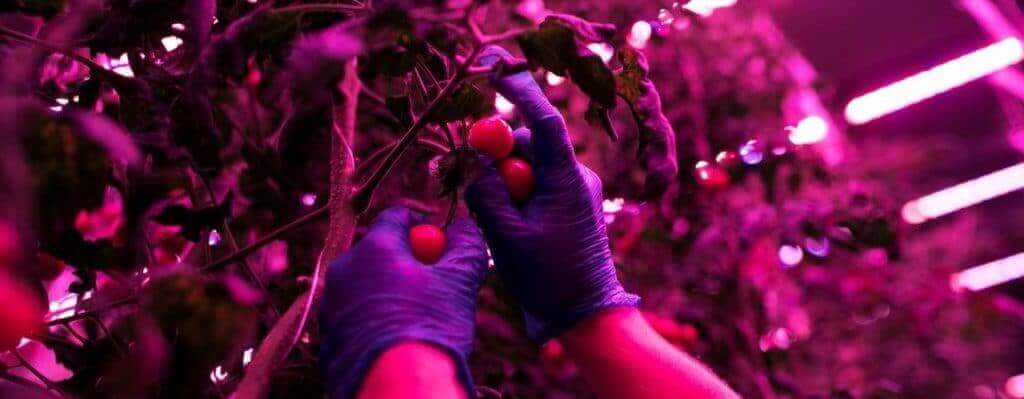LED grow lights–energy efficient = save money
Their full-spectrum coverage and customization options are renovating the way farmers see indoor and greenhouse growing. The best LED Grow lights are efficient, energy-saving, but most importantly they are really cost-effective in the long run. There are many ways to save money by using LEDs. Here are money-saving tips to follow in order to maximize your savings with LED Grow Lights in your marijuana grow operation.
Adjust Water Consumption
As a grower, you need to make sure your plants are getting just the right amount of water. Sometimes when there is a switch from one light solution to another, growers continue water treating the crops the way they did initially. Be aware that LED light fixtures do not generate as much heat as HID lights, for example. LEDs also do not emit IR light, so be careful not to overwater your plants. You can save a lot of money from water conservation.
Turn up the Heat
Traditional lights like HID emit a lot of heat and often additional heating for the plants is not required. On the other hand, LED lights hardly generate any heat. Take a look at this article where MaryJane Farmer gives you advice on the best way to control temperature and humidity in your grow space. Why and How to Control Temperature and Humidity in Your Grow Room
When growers install their LED fixtures, they should be aware that they might need to turn up the heater to increase the temperature in the facility. Even though this does not sound like a proper way of how to save money on the electric bill, it is. The total energy savings will be positive, due to LEDs’ energy efficiency.
Estimate the Mounting Height
 Situating the LED fixture at the correct distance from the plantation is vital for the well-being of your cannabis crops. The mounting height of LEDs should be properly considered in order to increase yield and the general quality of the greenery. One of the most important factors a grower should have in mind is the amount of natural light that reaches the crops (if there are any at all). For plants that grow in a completely closed space without sunlight, LEDs should be mounted in a way to grant wide light distribution, with deep concentration on the canopy. Mounting too low can create a stressful environment for cannabis. Mounting too high could increase the area coverage but the intensity of light would be lost and the plants would not grow to their full potential. If you do not have experience with LED lights, please use the manufacturer’s recommendation on mounting and the DLI (Daily Light Integral) for calculations at a later stage.
Situating the LED fixture at the correct distance from the plantation is vital for the well-being of your cannabis crops. The mounting height of LEDs should be properly considered in order to increase yield and the general quality of the greenery. One of the most important factors a grower should have in mind is the amount of natural light that reaches the crops (if there are any at all). For plants that grow in a completely closed space without sunlight, LEDs should be mounted in a way to grant wide light distribution, with deep concentration on the canopy. Mounting too low can create a stressful environment for cannabis. Mounting too high could increase the area coverage but the intensity of light would be lost and the plants would not grow to their full potential. If you do not have experience with LED lights, please use the manufacturer’s recommendation on mounting and the DLI (Daily Light Integral) for calculations at a later stage.
Install Multiple Units
LED grow lights have the amazing ability to target a specific selection of your crops, using optics. However, obtaining ultimate light conditions could be a challenge with just one unit. Implementing multiple units in your growing facility is one of the best ways to save money while growing cannabis. And, this will maximize yield in the long run.
Define Light Cycles
Light cycles are the hours of light and darkness a plant needs, stimulating photoperiod when needed. Growers can fully manage the light cycles, affecting the rhythm of the crop’s life. Here is MaryJane Farmer’s article on light schedules that work best for cannabis. Whenever you are applying the lighting cycle strategies, you should consider the plant’s daily light requirement. The most common light cycle is 18 hours of light and 6 hours of darkness, suitable for flowers in the vegetative state. Another example of a popular light cycle is the 12 hours of light and 12 hours of darkness, that triggers flowering.
Define Light Spectrum
With LED grow lights you can properly adjust and readjust the light spectrum exposure and photoperiods, according to the growth stage of the plant. Covering the full light spectrum, LEDs are best at creating the perfect growing conditions for the crops. MaryJane’s step-by-step beginner’s guide tells you how and where to place your LED lights.
Farmers can influence the flowering cycle and help plants deliver their best produce faster than usual. Through adjustment to a certain daily light cycle, along with a proper calculation of DLI (Daily Light Integral) of a plant, the energy output could highly decrease according to the lighting needs of the crops.
MaryJane Farmer’s Last Word
Many thanks to Luis Rivera from Advanced LED Lights for this well-written article. Check back often for reviews of the best products for enjoying marijuana to the maximum. Check out our home page for LED Grow Lights if you’re a grower. If you are new to growing, get our free Beginner’s Guide here. And if you have some great photos of your garden, pop them into the electric post office and send them to me: MaryJane@420Beginner.com.
Author’s Bio:

Name: Luis Rivera
Luis has 20+ years of experience in global market expansion, business development, mergers and acquisitions, business re-engineering, finance, and investor relations of software companies. He is passionate about technology, spectral science, indoor farming, food production, automation, and more. Since 2015 he is the president of Advanced LED Lights, a leading LED grow lights manufacturer based in Hiwasse, Arkansas. When not at work, Luis enjoys swimming, yoga, as well as growing grapes and flowers in Sonoma, California.




